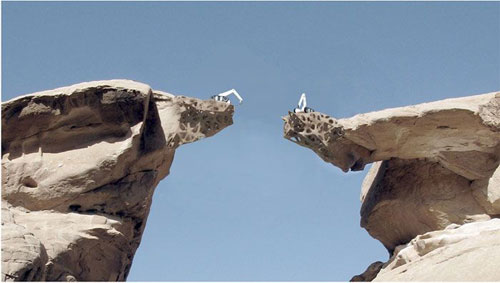Is there really a 3d printer using stone and sand

I have been hearing about a printer that uses sand , soil and stone to create objects. I am finding this very hard to believe but I suppose it's not impossible. Does anyone know for sure.














